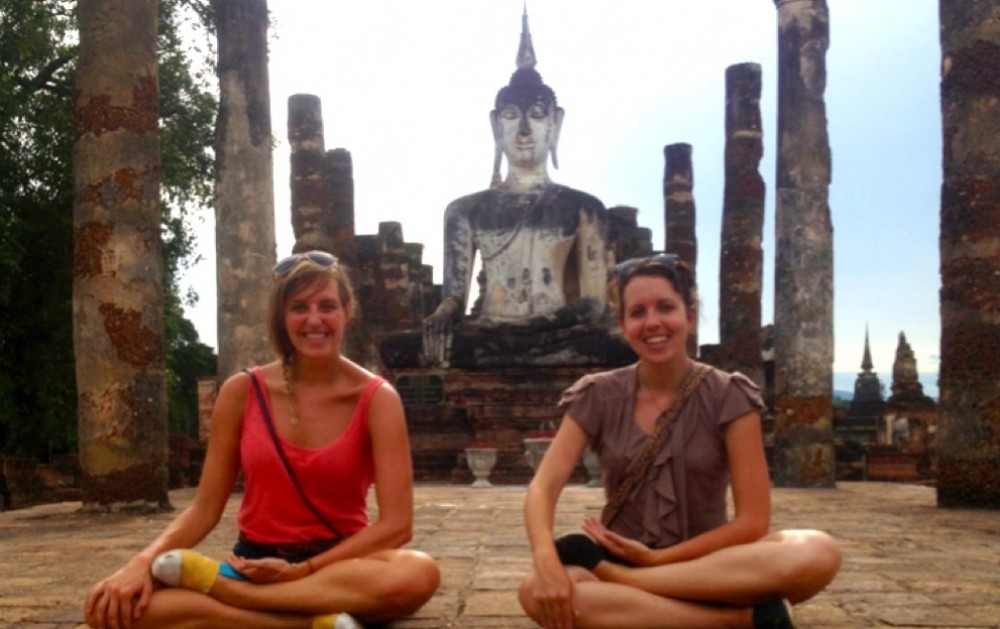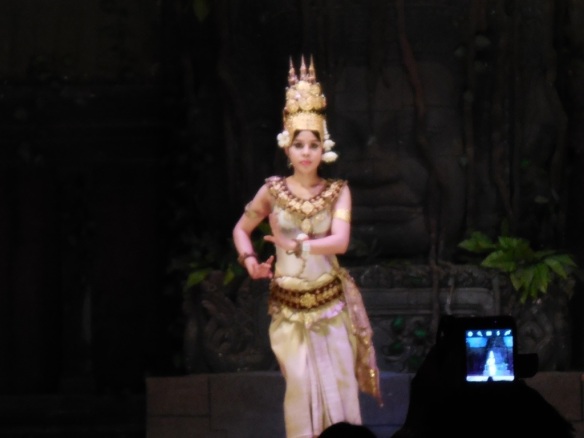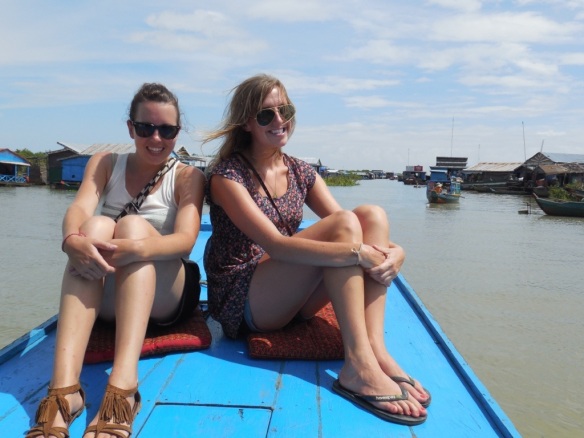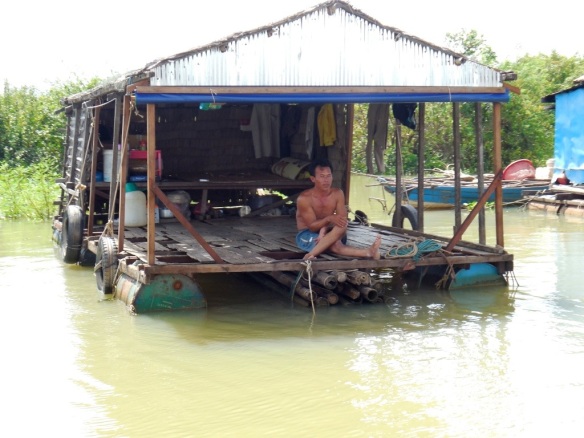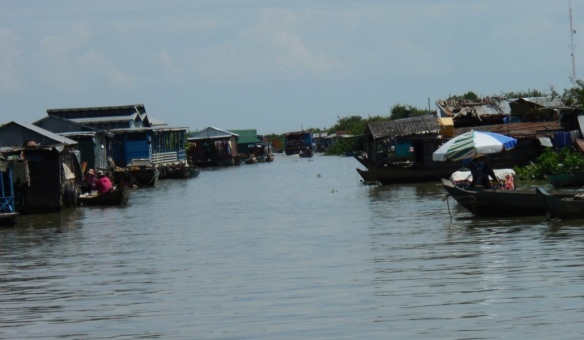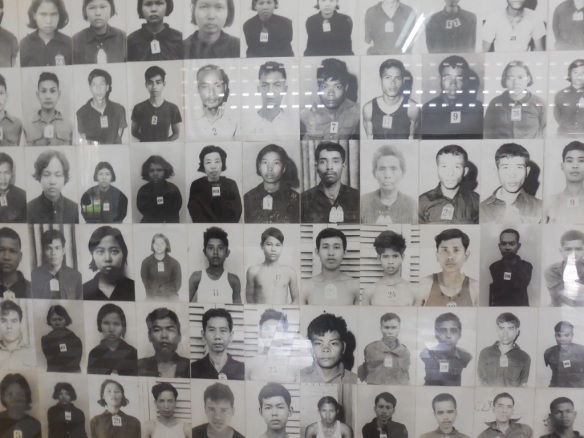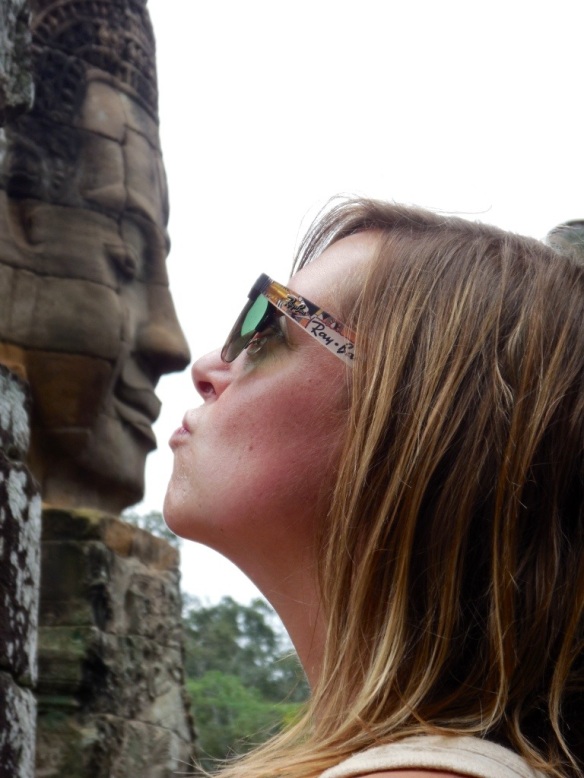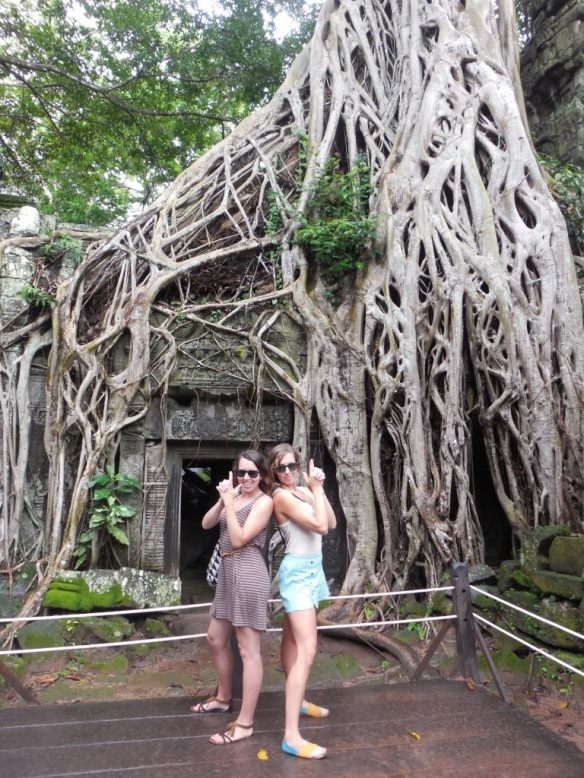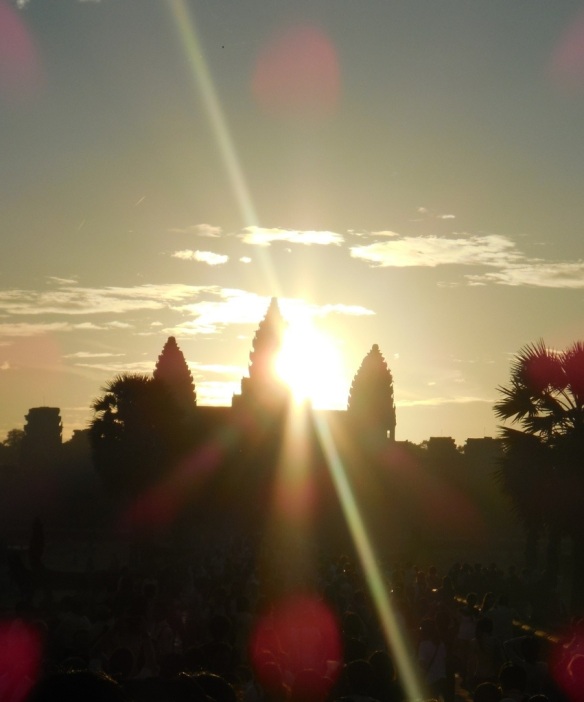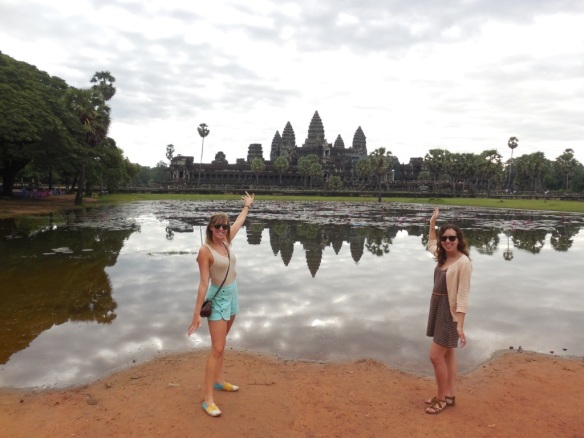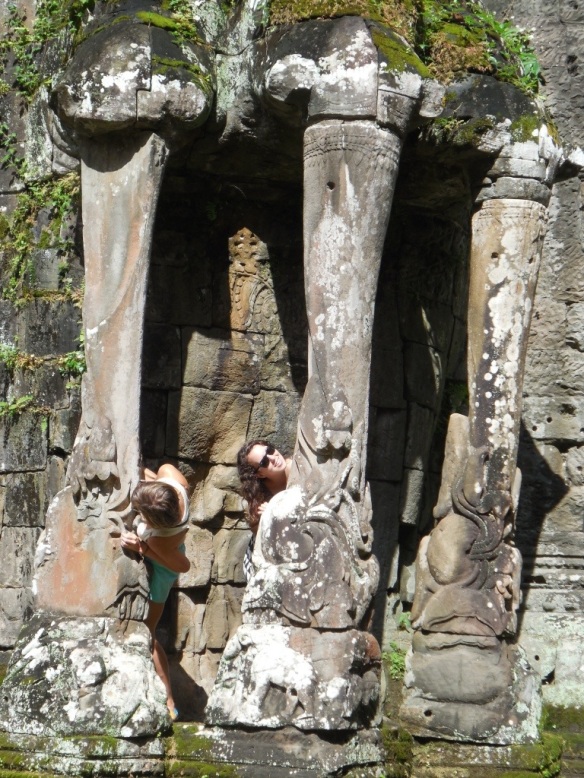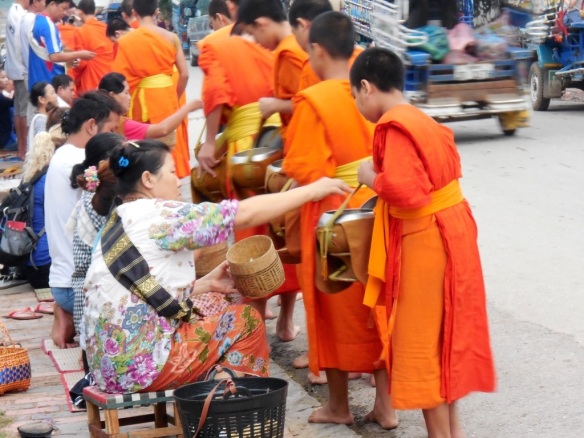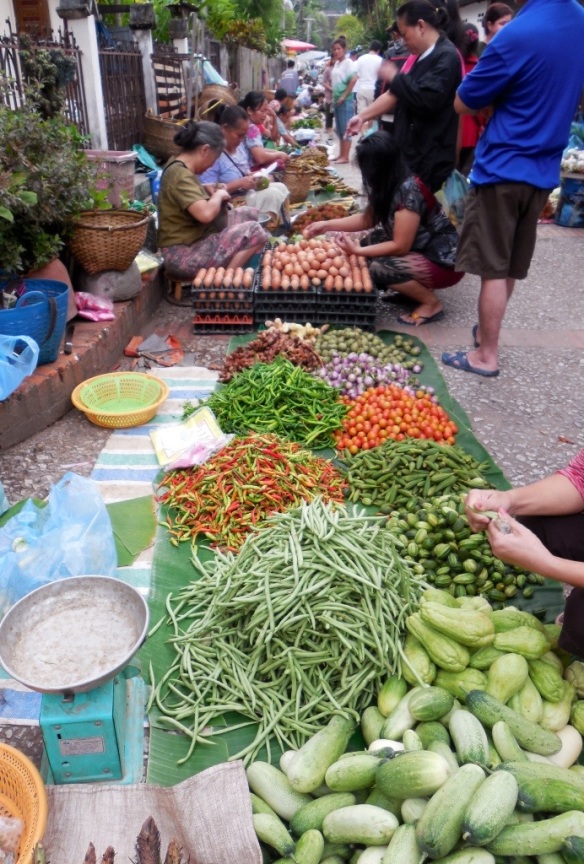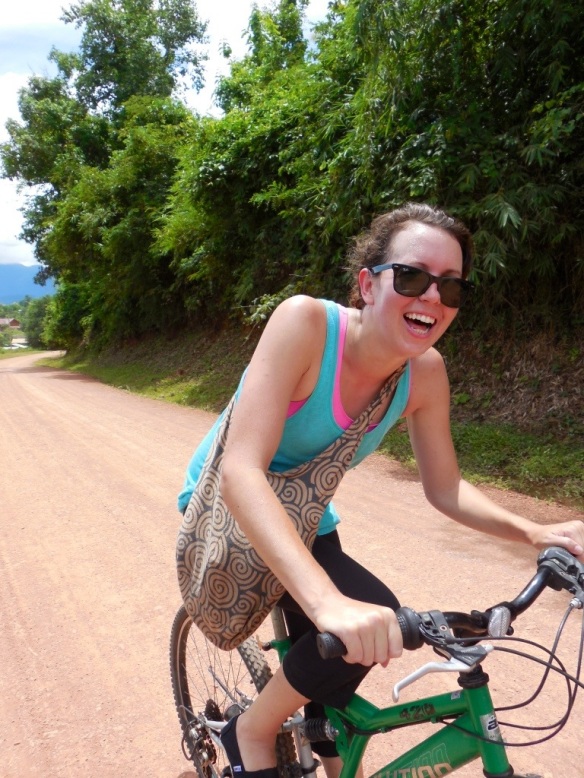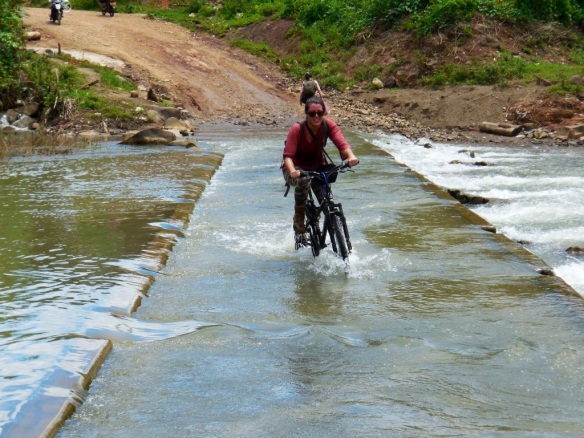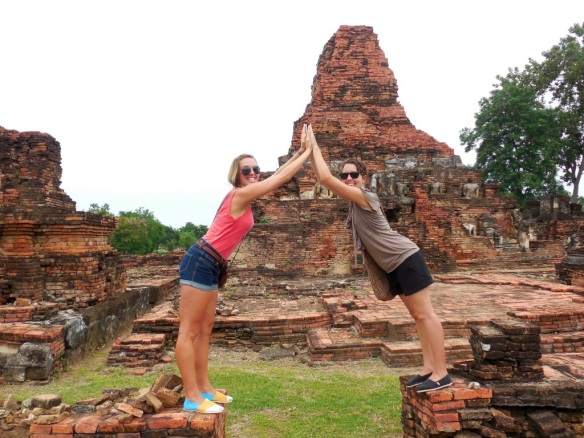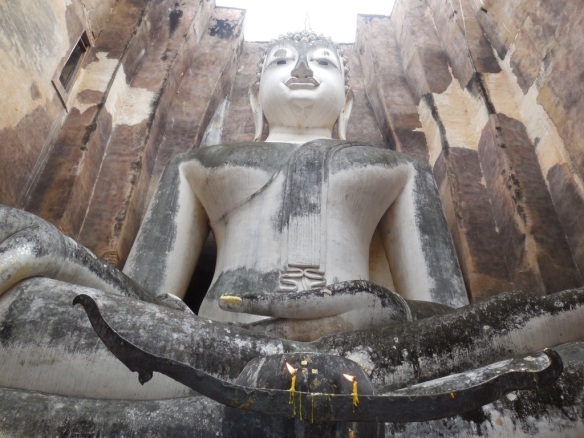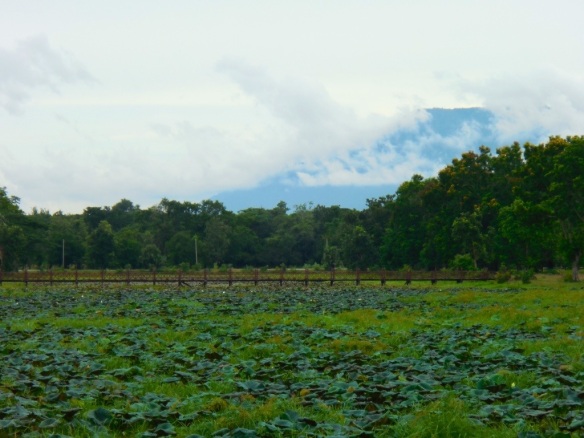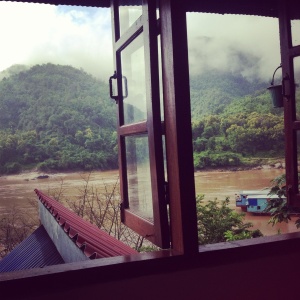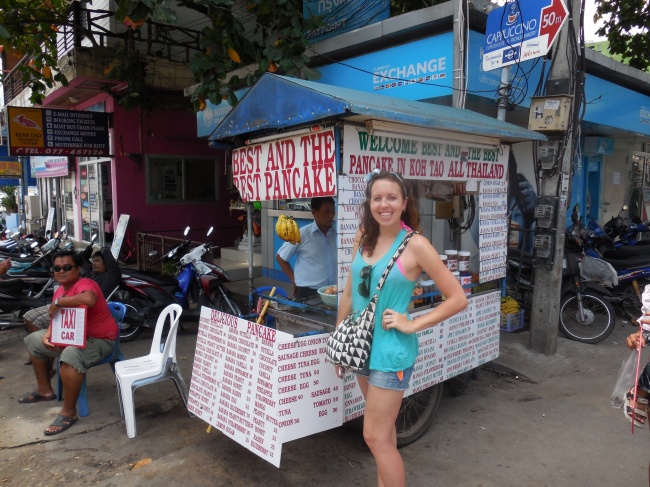Killing Fields. Phnom Penh.
“I don’t know how it is I am alive.”
Our hired-on-the-spot guide at the S-21 Prison in Phnom Penh, Cambodia told us with thickly-accented English. A survivor. A once 10-year-old girl, now woman, told us her story inextricably mixed with the history and horrors of S-21. Her story of being forced away from her home, her city, losing her mother, her sisters, brothers, and father and not being told why. Her story of being a child-pawn in the horrific plan of Pol Pot and his Khmer Rouge regime to build a Maoist, peasant-dominated agrarian cooperative enforced by starvation, torture, and blind mass murder.
Marianna and I arrived in Phnom Penh, grateful to leave Laos. Jumping on a tuk-tuk after enjoying the novel luxury of traveling by air, we were greeted by the smiles of Cambodian drivers weaving in, around, past, and across us as we sat in a tuk tuk chugging through the vibrant city. We soaked in the smells and colorful sights of the market, drank in the city views and breeze of the Mekong, and feasted on flavorful cambodian dishes. Woven in the threads of this beautiful country, however, are not-so-distant painful memories of the genocide that killed 3 million people, or one-third of Cambodia’s population.
Shamefully, this is a history that I as an American only recently learned about. Shamefully, I am from a country that recognized this killing-regime as legitimate both while they were murdering their own people and after they were defeated by the communist Vietnamese in the 70s. It is a shameful story where the US is not the hero. I wanted to learn more about this story, about the people who suffered, who died, who are now rebuilding. Moving through the killing fields and the S-21 Tuol Sleng Museum was incredibly humbling.
The day was heavy.
The melodies and voices composed and spoken by genocide survivors echoed through my ears walking through the Killing Fields, transmitted through the audio guide handed to each visitor upon arrival. I had read hundreds of documents written by the Khmer Rouge in a class I had my last semester of law school. I was an intern with other students assigned with assisting the tribunal prosecuting the Khmer Rouge’s war crimes. I had seen various reports and documents recorded by the regime who, like the Nazis, meticulously documented the progress made towards achieving an agrarian society. Seeing this place, hearing these stories, standing upon the ground where many lined up 40 years ago to be killed and thrown into pits, made all these documents come to life. It made Cambodia’s past impossible to swallow.
The killing fields is the place victims were brought to be killed. The field is scattered with depressions in the soil, once mass graves. Women, children, and men were murdered with whatever cheap tool soldiers could find and then thrown into the graves. Still today, when it rains, pieces of cloth or human bone emerge from the ground, ghostly reminders of what happened here.
Slowly making my way through the field, lead by the somber voice of the audio guide echoing through the plastic headphones on my head, I stopped at one particular tree. It stood, rooted to a particularly remarkable horror. It is the baby-killing tree. Soldiers flung babies against its hard bark, murdering them before throwing their small bodies into graves. Pol Pot said in order to eliminate the traitor, even the root must be removed – which meant killing the children of “traitors.”
It was silent in the field. Visitors to the museum moved slowly, trying to make sense and understand what had happened there. The graves, marked by wooden signs and fences, were decorated with tourists’ bracelets knotted around the wooden poles, making some sort of offering in memory of the many lives that were haphazardly thrown in these pits.
After leaving the killing field, worn and stunned by what we had learned, heard, and felt, we headed to Toul Sleng Museum. Here, the Khmer Rough transformed an old high school into a prison and torture chamber named S-21. Seven prisoners survived to tell the details of this hell after the Vietnamese overtook Phnom Penh, so the stories of what happened here are well-known. Rooms with metal beds and torture devices decorated the first floor of the prison. The faces of the prisoners housed within its walls, both dead and alive, are displayed on the walls. Each man, woman and child killed in S-21 were photographed as proof that no one, no one escaped. One room, holding individual cells divided by brick walls, had a pool of dried blood on the floor from its last inhabitant.
Our guide, a survivor of this genocide, told us the gory and horrific details of S-21 with a stoic face. We listened, took it in, and asked for her story. Her story of being 10 years old, forced to work in a child’s work camp, and starved. After the Vietnamese came, when Non was 13 years old, weighing only 15 kilos, she walked back into Phnom Penh, looking for her family. This resourceful brave girl found her mother amongst the city’s ruins and began to rebuild her life.
Non still smiled at us when we left. She learned English so that she could become a guide. She shares her story and the story of her country’s history every day, multiple times a day, to tourists.
She is resilient. Her people are resilient. And I, I was humbled by this story of resiliency, of the human spirit, of survival. In the wake of these recent horrors, in Cambodia, the people smile. They smile defiant, resilient, determined, brave smiles.
Temples of Angkor
Cycling though Luang Prabang
The Holland man with an American accent recommended an enticing adventure our first night in Luang Prabang while I feasted on fish and Lao spices. “It’s a secret, don’t tell anyone,” the tall waiter whispered, urging us to rent some bikes and go on the path less traveled. Always looking to be intrepid and seeking an adventure, this was exactly the flavor we were craving.
We were three now. Mari and I met Irene on the tuk tuk after the slow boat. Irene is a girl from Italy who is traveling the silk trail, moving through the continent by land to return to her country. She is tough. Hardened by solo travel, she has a Laura Croft aura about her. Hiking boots, camo leggings, “don’t mess with me” written across her forehead, and wild curly hair. Irene is a badass kind of chick. Underneath her seasoned exterior, Irene invents English/Italian words (Italish), is ready for any type of adventure, and is as silly as Mari and I. Irene is easy going too, “too me, it’s the same,” she says with her Italian accent, willing to go anywhere, do anything. She was a good fit.
The next morning, the three of us filled up on crepes, Laos coffee (coffee with sweetened condensed milk), and, of course, the daily mango fruit shake. “You need good mountain bikes,” the Holland man warned. What we found were so-so mountain bikes. Satisfied, armed with a take-what-you-can-get-we’ll-make-it-work-for-sure-we-are-in-Asia mentality, the three of us biked down to the ferry dock behind the national museum.
Luang Prabang is a beautiful old French colony. It’s architecture and ambience feels European despite the Wats, Asian textiles, and Laos people gracing its streets. When we hopped on the ferry across the Mekong River, it was clear we were floating away from this fairy land. Dirt roads, mountains, and fields greeted us.
We took off on a loop through the land, 30 kilometers over steep terrain, potholes, wading through rivers that coated the shabby road. Each hill crest opened to one of the most beautiful views I have seen over and over again. The mountains were coated with wild jungle and sprinkled with lush green rice patty fields locals planted and tended. The green was so vibrant that it hurt my eyes. The sun beat down and my body was soaked with sweat as my legs powerfully pushed the so-so bike up the steep-steep hills. Along the way were herds of water buffalo with cow bells ringing, occasional chickens, dogs, and even wild boar. We cycled through villages waving at small children splashing in water or playing on this Sunday afternoon. “Sa ba deeeeee!” they yelled after us as we biked by.
The trip seemed interminable in the heat of the day. After four hours of biking, when it felt like we could not go much farther, we ran into the Holland man once again. Our good omen promised us only 15 minutes to go. We heaved sighs of tired relief and pumped up the last few hills. When we made it back to the ferry landing I was famished. I eyed a fresh fish from the Mekong, secured between two wooden sticks charring over a fire on the side of the dirt road. I pointed to the fish I wanted, and $20,000 kip (about two dollars) later my hungry stomach welcomed its sweet flesh stuffed with lemon grass, Laos words, and spices.
Buddha, Buddha, Buddha rockin’ everywhere.
Now for something completely different. 100% different. Marianna and I stepped of the train in Pitsanaluk, Thailand a little stunned. It was because of what we didn’t see, not what we saw. No English words, no tourist information center, no thing remotely familiar. Hungry, we waded through the night market outside the train station pointing at vats of unfamiliar savory foods thrown into a styrofoam container destined to become our dinner. We were two bulls in a china shop, our bulky backpacks strapped on, fumbling with our Baht and limited Thai words. Despite our obtrusive presence, these respectful, sweet people did not bat an eye at us. If I were a vendor or visitor on this street, I would have stared, pointed, giggled at our over-the-top gesticulating communication style. Instead, we were swallowed without hiccup into the crowd of locals buying galanga root to make their soup for dinner, catching up with the egg-lady on the corner, or pointing to a the row of plastic bags, tied at the top, filled with some sort of vegetable/meat soupy-goodness. Dinner to go.
Sukothai, I was told by my lonely planet, is best explored on bike. After some negotiating- remember, no price is ever final here- we wiggled our way into a private bike tour with the tall, thin, knowledgable, and gracious guide, Jip. Upon arriving at Jip’s house, he handed us two helmets, matching trek bikes, complimenting our “beautiful white skin” and lots of smiles.
Toms on, helmets strapped, coated with bugspray and sunscreen, we took off to explore these ancient ruins.
Traveling the 6km from Jip’s house to the old ruins, we passed idyllic rice paddy fields and smiley villagers fascinated by our white skin and light hair. “They never see people like you around,” Jip told us. “Most of these people will never leave their village or know other places in the world.”
Jip spouted information about all things Thailand. He pointed to the rice field, identifying the crop’s age, describing planting techniques, telling about the husband and wife living and working deep into old age in a small shack in the middle of a field. As a young person, Jip too worked in the rice paddies. “The most strenuous work,” he told us, his lean body shaped now by the hours of cycling instead of lifting machinery and bending over to sow the land. He explained the process for making rice, showed us a teakwood making factory, and described the ins and outs of village life.
As we wound through the dirt paths following the river, Jip described his monkhood. First ordained as required by the king, he spent two years in the orange robes, studying buddhism and meditating. Like many of the people I have encountered in Thailand, Jip talked about Buddha’s teachings.
Mindfulness, emptying the mind, good heart, giving kindness. The interrelatedness of the human family through suffering. The inevitability of suffering. The ability to end it.
Cycling, moving forward, I spotted the first grouping of ruins in the midst of a rice field, decorated by moss and surrounded by a husband-wife-rice-farming team’s land. Sukothai’s ruins are the majestic remains of the great Khmer Empire, the first capital of Thailand. Here, in 1257, the Thai alphabet was written, a city thrived, culture, and architecture developed. Sukothai means “rising happiness.” I felt the age of the bricks beneath my feet, studying the “chedi” structures where the ashes of kings reside, and peered into the downcast eyes of the massive Buddhas before me. Cycling from one ruin to another, Jip told us of the purpose for various structures, most, like many ancient cities supporting life, intended to honor and send off loved ones into death.
My favorite temple was Wat Mahathat. Walking about to the old building, Buddha peeked between two great stone walls. As we approached Buddha, Jip handed us fragrant sticks of incense and two candles. “Make a wish to Buddha,” he whispered. “Send out a prayer.
Walking into the walls of the temple, we were alone. The space was cool, shaded and protected from the sun’s heat by old solid stones. I felt the sacredness, the age. The ancient place of people that came before Buddha in need of guidance in such a confusing, difficult life. They too were finding their way. Perhaps saying farewell to love lost, fearful of challenges ahead, looking for a way to accept, to release. We lit the incense. As the smoking aroma rose, Jip showed Marianna and I how to melt the wax on our candles. “Let it drip on the metal bar, and create a solid base.” The hot wax melted and I pushed my candle down firmly.
Serene silence.
“Send out your wish,” encouraged Jip. “You can’t tell anyone about it, ask the Buddha for guidance.” And so I did. My heart’s needs spoke out, floating to the big Buddha, floating on the tail and trail of the light incense smoke, floating with the wishes of centuries before, feeling small. And human. And real.
Koh Phi Phi Pics
Gallery
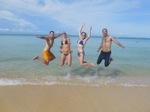
This gallery contains 10 photos.
Hiking through the trails and discovering a secret beach. Mari and I tried our best at Moi Thai Boxing. Our beautiful bungalow. Viewpoint Number 3. Breathtaking. Lounging, private beach. Snorkeling, cliffdiving adventure on Phi Phi.
slow boatin’ along the Mekong.
The destination is in the journey.
Not quite ready to say goodbye to Pad Thai, the baht, and Thai smiles, but knowing it was time to go, Marianna and I had to get moving and take it slow. We had heard from countless travelers about the “uncomfortable, but worth it,” journey up the Mekong River to Laos from Thailand. This boat journey was the only consensus from our fellow backpackers – it is so good, we had to do it.
After bargaining, then booking a all-inclusive Laos slow boat package from our guesthouse owner Saki/Sindy (his name was really Saki, but we thought it was Sindy for 4 days. Turns out Sindy is a long lost unrequited love. So then we called him SakiSindy, one word), we jumped on a van, waving goodbye to Chang Mai and heading towards a new journey, backpacking, moving towards another adventure.
The slow boat journey takes two days. It starts in Huay Xai, stops one night in a small village called Pak Peng, and ends in Luang Prabang, an old cycling formerly french colony of Laos. The boat – well, it’s slow. The wooden boat is outfitted with seats converted from an old car or airplane, crudely strapped onto the hard wood floor with rusting bolts. The crew was a Laos family, with their quarters at the back of the boat and a squat toilet in the rear near the engine.It is not particularly comfortable or uncomfortable, fancy or primitive, charming or ugly – it is slow.
Walking on the boat these old converted seats were filled with fellow backpackers, travelers, from all over the world, here for the journey. Here for the slow ride. Not in any particular hurry to get from one place to another, drinking in the Mekong and traveling like people should travel – slowly. Slowly in order to feel the kilometers and hours that separate places from other places.
The cast of characters strewn about these seats clothed with various colors of elephant-genie pants, big backpacks, and Lonely Planet books became our friends over the two days and one night. After all, all we had was time. Slow-moving time to soak in the Mekong lush green and one another’s stories.
There was George. A 63-year-old man from California, recently divorced and finding his new adventure. He has meditated for 20 years, works as a psychotherapist. As we floated on the brown muddy Mekong, Dennis talked about how to experience the greatest depth of the many emotions and experiences life hands you. He talked about falling in love. A person can fall in love every day, with different people, different types of love. But it can always be mad love. He had a certain sadness in his eyes, but an excitement that even as an old man he was something new, always changing. He was a man on a mission – he wanted to retire in Asia and also may or may not have been doing “research” on finding a Thai bride. We slowly floated along.
Then there were the german boys. We met them on our bus from Chang Mai. They were so, so German. Serious faces, thick accents, and jokesters. They both just finished studying and had a few months to travel. Silly boys walked down to the river during our stop over in Pak Beng and shared Beer Laos with the slow-boat drivers, coming back drunk and giddy, just in time to pay for their dinner. We spoke of their health-care and school systems (free for all), taxes, and our future plans. We lamented the inevitable end of adventure and the beginning of picking our career paths. We slowly floated along.
Bonnie was a trip. Korean tour guide Barbie, we jokingly called her. A woman from Korea who had broken every societal expectation placed on her. She wasn’t married, no kids, and did not live in Korea much of the year. She was a tour guide for young Koreans who go to Europe. She brought her tour guide persona on the journey as Bonnie shepherded us from one boat, van, restaurant and pier to another, a smile on her face the whole time. She called one of the french boys “BB” meaning, beautiful boy and laughed out loud each time he called her, in his thickly-accented way “BG,” beautiful girl. We slowly floated along.
The frenchmen were well, French. Hailing from the alps in France, these two chain smoked cigarettes and tentatively rolled newly-acquired English words on their tongues and ordered wine in a country that only drinks beer. They had spent a year traveling and the more drinks we had the more stories they told about their travels living in a van in Australia. They listened to French rock music so loudly it hurt my ears. They smiled and sat on the edge of the boat, looking out at the villages and greenery we passed. We slowly floated along.
Then there was Johnny from Portugal. He was a cartoonist by trade and had lived in Paris for 9 years. Johnny studied astrology and numbers. My number, calculated by the day of my birth is 5. He was a 5 too. We are always pushing, moving forward, changing, learning to be flexible. My life number, a 9. A giver, caring, always making time for people. Marianna’s day number is nine, her life number, 5- exact opposites, but the same numbers. “When you say good morning and someone doesn’t respond, you can’t let it hurt you,” he told Marianna and I as we listened intently over the roar of the engine. “This is who you are, you want to give, not everyone is like you. You will suffer if you expect the same from others.” Learning more about yourself and how to interact with other people, that’s why he studies numbers. I told him my stories, he gave me his insight. His deep yellow/green eyes staring intently. We slowly floated along.
Slowly floating down the Mekong our fellow passengers read, slept, talked, drank BeerLaos, leaned on one another’s shoulders for quiet naps, told stories, and listened. Listened to the sound of the boat’s engine, listened to the foreign Laos language uttered by the crew, listened the calm waves slapping against the wooden body of the boat. And we listened to one another. Traveling, making time, slowly floating along.
-Katy
itinerary. where we have been.
8.21: Arrival in Bangkok
8.22: Travel to Koh Samui by plane, then ferry boat to Koh Phangnan. Motorbike to hotel to meet up with Marianna and McGeorge crew.
8.23: Traveled to Koh Tao via ferry after dropping off my motorbike and hitching a ride with a motorbike taxi to meet the crew on time for the ferry
8.24: Snorkeling on the shores of Koh Tao including a trip to a private island with a viewpoint of the sea and strip of sand connecting two landmasses
8.25- 8.28ish: McGeorge crew leaves, Marianna and I are on our own. Take a horrific night boat to Sarat Thani then a city bus to Phuket. Try to manage in Phuket for awhile.
8.29-9.3ish: Ferry to Koh Phi Phi. One day, rented a private boat to take us to Monkey island, Maya Bay, snorkel, and be amazed at the huge limestone carsts pushing up in the turquoise sea.
9.3ish – 9.5ish: Back to Bangkok. Saw Wat Pho, the Grand Palace, partied on backpacker ally and shopped til we dropped.
9.5ish-9.11ish: Chang Mai. Elephant treks, thai food cooking class, tiger petting, manicures, and a two day Monk Chat meditation retreat. We walked the closed off walking streets of the Sunday Market and enjoyed SindySuri – our home for awhile.
9.12-9.15: Journey to Laos via slow boat.
9.15-9.17: Luang Prubang. Explored Kuang Si Falls. Watched the people give alms to local monks. Went on an epic 30km bike ride after taking a ferry across the Mekong through beautiful rice fields and small villages.
9.17-9.19: Near death bus ride experience from Luang Prubang to Vang Vieng. Partied in Vang Vieng, got sick, Mari and Irene went tubing, tried to find caves.
9.19-9.20: Kayaked from Vang Vieng to Vientiene. Got massages and flew to Phnom Phen the next day!
9.21-9.22: Phnom Pehn. Explored the busy capital city. Saw the killing fields and S-21 prison camp. We learned about the horrible genocide that occurred in this country and fell in love with the Cambodian people
Floating through Bangkok.
It was one of those light, flirtatious, floating days.
Waking up in Bangkok, day three. I emerged from our windowless small hotel room running shoes in hand, giddy with a new pair of socks I inherited from my 25 B/kilo laundry day. Two new matching pairs fo free. The hot sun on my skin pushed away the residual sleepy fog. The moment it hit my skin began to glisten with the constant sweat that is Bangkok. The beads of sweat tickled as they rolled down my back, cooling me in the city’s heat. I ran through the city streets, dodging reckless drivers and drinking in smiles from the inviting vendors and tuk tuk drivers. I slipped in between the fences of the park surrounded by intersections and intricate temples and started making laps. A police officer, reclined in a metal chair by the park entrance waved and smiled at me each time I passed, offering me water and another sweet taste of pleasant interactions with these heart-y people. Crazy blonde girl. Yes. This is a good day. Thank you Thailand for reminding me how beautiful this life can be.
The country’s charms pull me away from dark tired places, rejuvinating, reinvigorating, offering me something good, light, new. I am new here. I am nameless. No one here knows where I come from, what I have done, or what I should be doing. Feeling lost I am in the process of finding. Clean slate, discovering, adventuring, feeling light.
Back to my room, shower (Number one of three for the wet heat), off to the Grand Palace to see the famous emerald Buddha. I visited the shake lady- always go with the food ladies, superior to the food cart men – and bought a 30 Baht mango lime shake along the way. I lined up at the temple and feigned off offers for tours in English. I pushed my way through crowds of Chinese tourists to see what I could see of the pinnacle of Royal Thai luxury. Wat Phra Kaew is the former Royal Palace built at the King’s demand in the 1780s. It is laden with jewel-encrusted temples and statues of mythical creatures placed to protect the king. School children sat under shaded huts, singing traditional Buddhist lyrics, their words echoing through the crowded structures.
I was studying a gold wall when two Chinese women approached me and held out their camera. “Oh sure, I can take your picture,” I responded. They shook their head and one woman pulled me by her side while the other took a picture of me and the stranger. I giggled. The two switched places and I smiled for round two. Another group of Chinese people came over and seized the opportunity for pictures with the American. It felt silly, but I smiled at the difference. All the differences and the commonality between me and those that surround me in this foreign land. The day was still light, I giggled some more.
Before entering into the temple that houses the emerald Buddha I removed my shoes placing them among the piles of knock-offs of expensive brands. My knock-off Toms fit right in. A fake child, in a fake poor country, got a fake pair of shoes for my real purchase. Thailand is what it is, and it isn’t what it isn’t. The Buddha sat on a high pedestal, in his summer robes, and throngs of tourists kneeled below him. I too sat on my knees and bent, touching my head three times to the marble ground like those around me. It was cool in the temple.
It was light. I was enveloped by the display of reverence from people all over the world around me, whether Buddhist or not. Enveloped by the obvious and yet forgotten truth that we are all so much the same. Enveloped by the likelihood that all cultures and people – throughout history and in our time- embrace that there is something more than our immediate existence, to kneel before something, to be reverent, to pause, to acknowledge something bigger – whatever that might be and for whatever reason we might do it. The day was still light.
I rushed back to my hotel where Marianna awaited. Time to pack up and get moving to the next adventure. Our Spanish friends, Rual and Julian, came to see us off. We giggled in the lobby, joking and teasing their English, using our Spanish, and asking after plans for the future. Dizzy with the truth of our current existence- we have no plans except now. Sukothai for many days and then perhaps the next place. When to the next place? Well, when we go. When will we see you again? Next time. Definitely next time. The day was still light.
We jumped in a meter taxi, running late, as usual. “I have a feeling we will just miss it, or we will make it,” said Marianna. We giggled. Our driver, Preecha, spoke wonderful English. We jumped on the opportunity to ask him questions about our foreign country. We had been dying to ask a Thai person. How fortunate.
“Where are all the fake products made?” we enquired.
“Produced in China, sold here. The government cracked down on the producers for awhile, but they are sold everywhere. Don’t buy. They don’t work,” he responded.
“Why are there so many twinkiling lights on the streets right now?”
“The king and queen from Malaysia are visiting. It was our Queen’s birthday, so they just left the lights up,” Preecha patiently explained.
“Do you think we will make our train? It leaves in 20 minutes,” we asked.
“Maybe, I will try. Depends on traffic.”
He explained to us that some men wear one long fingernail because it is in style. The long boats have colorful ties on the bow for decoration and because that is what the King did with his boat. The people have a good king who has done more than 7,000 things for the people and has the longest reign of any monarch in history. The king was born in the United States. Ahh, so many answers, many of which we guessed, but accepted we might never really know. Now we know. Or we know what Preecha told us.
Preecha rushed us out of the taxi, pointed us to the ticket counter, and handed us his card if we need him again in Bangkok. We rushed to the counter, two tickets, tourist price, and landed at platform number ten. “Hurry, hurry” said the train people, they were serious this time. We hopped on and proceeded to our car. The train started moving. Giggling with our luck, giddy with a new experience. It must be our new Buddha pendant necklaces. I swear we have been getting more smiles. The day is still light.
So happy to not be on a miserable bus for transportation we danced and laughed, drinking in the air from the open windows and comfy seats. The train is like Thailand’s Polar Express. Instead of hot chocolate there is a variety of meats on a stick, mangos, nuts, and green foreign stringy substances. Instead of rosy-cheeked train attendants there are smiling laughing venders yelling out the names of their goods in harsh loud tones, walking up and down the train aisles. Instead of Santa Clause there is a conductor wearing what looks like a military uniform who takes our ticket and finds a wooden plank to force our sealed, stuborn window open. A man with a small beige hat stops at our seats when Marianna buys a water, he laughs, we laugh, he laughs louder, we laugh louder. No words, just laughter, smiles for no reason in particular. He feels the light too.
Hungry, I walk down to the food car. Five Thai men surround me. They know ten english words with their heads combined and I eventually and successfully order chicken stir fry in chili sauce. A woman disappears to another car and emerges 10 minutes later with a hot plate of vegetables, chicken, and rice. Arroy-ma. Delicious. They laugh at my broken, messy attempts at Thai.
Now on to Sukothai to learn about the old capital for this beautiful country. The day is light, we have nowhere to be and everywhere to go. No one knows our names. Only our smiles and our Buddha necklaces we bought on the street. The wind is on my face as we ride through the countryside. The day is flirtatious, the day is light. Onward. I can finally breathe again.
-Katy
Phuket. The city on the way to somewhere better.
After starting in Bangkok and then traveling south to the islands near Koh Samui, Koh Phangnan and Ko Tao, Marianna and I packed our bags to head from the lower western golf coast to the upper Andaman Coast. We stopped at Holiday Travel Agency in Ko Tao and were informed of the various ferry departure times and bus options to go to Phuket. A night boat to bus seemed to be an economical option – pay for “accommodations” and transport for 810 Baht – mistakes were made, lessons were learned. We piled onto the night boat after buying a kebab from a street vendor and a savory pancake (a crepe-like food with various delicious fillings) from “The Best and the Best Pancake” vendor near our hotel. Though difficult to pick between the two carts across from one another, both claiming to be “The Best and the Best,” we decided on one and chose an onion, tomato, egg and cheese pancake for dinner.
Arriving at the night boat we were escorted down a rickety wooden ramp and then claimed our “beds” on the upper deck. On the boat were rows and rows of mats, about the size and thickness of a yoga mat, lined up one closely next to the other. I had the opportunity to cuddle with a german gal on my left and Marianna on my close right, hugging my purse and sweating on the pillow covered by a sheet that was hopefully changed from the previous sweaty traveler before me. The boat violently rocked pushing the hot, sweaty bodies of my new friends against me. I calculated the possibility of survival in the event the ferry sunk- one life jacket for every five people gave me about a 20% chance. The squat toilet on the ferry was particularly hard to maneuver around given the violent rocking of the boat and the wet floor around it.
We arrived in Surat Thani at 4:30 a.m. and jumped on a taxi truck which drove us to an office/restaurant travel agency. They threw on a Fast and the Furious Six to keep us entertained while waiting for our bus and charged us for bathroom use and plugging something into the wall. The rest of our fellow boat-friends left to their various destinations while Marianna and I were transported to yet another travel agency. Upon our arrival two plastic chairs were placed on the sidewalk, suggestively far away from the interior of the office, insulating our Thai stewards from question about why we were being moved from one office to another instead of to Phuket. A car then arrived to take us to the “Big Bus.” The car indeed carried us to a “Big Bus” or the city bus. Decorated with royal blue curtains and rose pink valances, Marianna and I were clearly the only foreigners sitting on the plastic sticky seats. Our journey was long, the bus stopped frequently picking up travelers on the side of the road headed to Phuket or another destination along the way. Comically, a german family piled on at one of the stops and asked the driver if the route was direct. “Direct, yes” said the driver. We couldn’t help but laugh as the four hour bus ride was slowly turning into seven hours. Thai direct. After a few hours, the bus stopped at a rest stop with various food vendors and no english menus. We ordered Pad Thai from a sweet woman who lightened the spicy heat for Marianna’s delicate palate and our white skin. It was hot and absolutely delicious – only 40 baht or one dollar and 30 cents. It turns out we had lunch and then entertainment… After climbing on the bus again for the last leg of our journey the driver turned on a karaoke CD. We practiced our Thai, singing along to sappy love stories illustrated by Thai pop stars with long hair singing about unrequited love.
Arriving in Phuket we found a Chilean pair who shared our taxi. The driver could not find our hotel, and angrily drove around the busy, smoggy city streets until we stopped, called the number of the hotel and finally arrived.
A very nice Indian/Thai family greeted us at the Star Guesthouse (600 Baht/night) and showed us to our air conditioned room – a sweet haven following a long, tiring journey. The bathroom was typical of most bathrooms in Thailand with the shower, toilet, and sink crowded in one open space. We made it to Phuket.
Phuket is the Atlantic City of Thailand. The Beach is busy. Parasails and jet skis weave among beach swimmers and vendors attempt to sell Henna Tattoos and beers along the sand. Risky tourists strapped their small children into life jackets and sent them to the sky accompanied by a man who swung himself up on the cables of the sail, unattached by any security device except his tight grip on the lines. This was a sharp contrast to the tranquil, easy beaches of Ko Tao we had just left.
We left the beach and walked through the red light district back to our hotel accosted by “pet my lemur” vendors and the infamous “Ping Pong Show” advertisers. The street was lined with western music and irish pubs. The food here is more expensive than that of the other islands. Phuket has an unattractive, counterfeit feel. Though clad with western restaurants like Starbucks and a Sizzlers, it was surprisingly hard to find amenities like free wifi.
Marianna and I walked through the maze of vendors, bargaining for swimsuits and sarongs. We ate meat and corn from street vendors and found a shake lady who combined mango with ice and other mysterious ingredients for a delicious concoction for only 30 Baht. I had my first Thai massage for only 250 Baht (around 8 dollars) for one hour. The best thing about Phuket was its tourists hailing from a wide variety of places like Japan, China, and Spain. We met no other Americans, but enjoyed chatting with other travelers from unusual parts of the world.
Day two of Phuket I woke up and went for a cleansing run through its hot hills. I needed to leave this place. It was stifling. The taste of an Irish Bar with a good internet connection, blasting sappy break-up songs and a stingy waitress, left an unwelcome residue on my skin and a bitter taste in my mouth. Cut off from the home that I had, the comfort I knew, time to leave this place as a distant memory. Time to heal, explore, find the real Thailand again, find the real me again. Marianna and I headed to Koh Phi Phi.
– Katy
